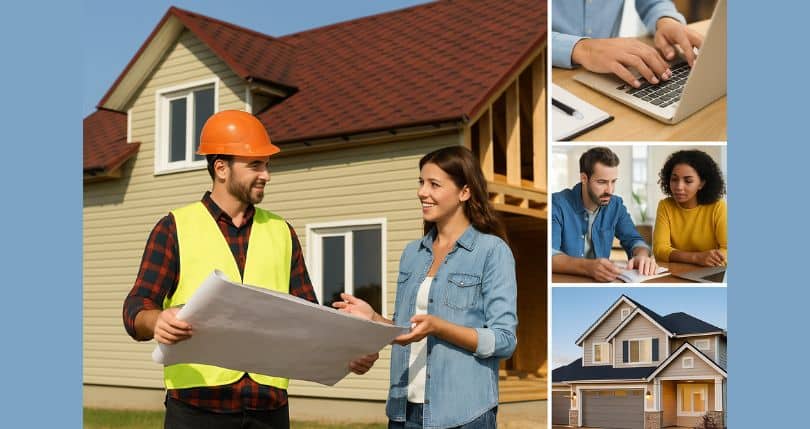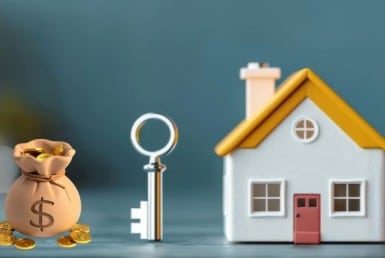THE BUILDER RELATIONSHIP: How to Communicate for a Smoother Build
Building your dream home is one of life’s biggest investments—financially and emotionally. But the experience can either be rewarding or stressful depending on one key factor: the relationship you have with your builder. Clear, respectful, and consistent communication can make all the difference between a smooth construction process and one filled with misunderstandings, delays, and costly mistakes.
Start with the Right Builder
Before the first nail is hammered, choosing the right builder sets the tone for the entire project. This isn’t just about price—it’s about trust, reputation, and shared values. Look for a builder who listens carefully, explains clearly, and welcomes your questions.
Do your homework. Research potential builders online, check their Better Business Bureau rating, and talk to homeowners who have worked with them. Ask how the builder handled changes or unexpected issues—because every construction project will have a few. If possible, choose a builder who goes beyond minimum code standards. Most homes in Texas are built to meet the bare minimum required by law, but higher-performing homes are built by professionals who care about quality and efficiency. Builders who participate in programs like BUILT TO SAVE®, or AEP Texas High-Performance Homes demonstrate a commitment to superior craftsmanship, energy efficiency, and third-party verification.
Before the first nail is hammered, choosing the right builder sets the tone for the entire project. This isn’t just about price—it’s about trust, reputation, and shared values. Look for a builder who listens carefully, explains clearly, and welcomes your questions.
Do your homework. Research potential builders online, check their Better Business Bureau rating, and talk to homeowners who have worked with them. Ask how the builder handled changes or unexpected issues—because every construction project will have a few. If possible, choose a builder who goes beyond minimum code standards. Most homes in Texas are built to meet the bare minimum required by law, but higher-performing homes are built by professionals who care about quality and efficiency. Builders who participate in programs like BUILT TO SAVE®, or AEP Texas High-Performance Homes demonstrate a commitment to superior craftsmanship, energy efficiency, and third-party verification.
Ask the Right Questions Early
Your first meeting with a builder should feel like a job interview—because it is. You’re hiring someone to bring your vision to life, so take time to ask thoughtful questions.
Here are some good ones to start with:
A confident, professional builder will answer these questions openly. Their willingness to communicate—and to educate you—shows they take pride in their work and value transparency. If your builder doesn’t know what a HERS or ERI score is, run away. These scores measure a home’s energy efficiency and are a clear indicator of the builder’s understanding of quality, performance, and long-term value.
Keep Communication Consistent
Once construction begins, communication should never stop. Establish early how often you’ll receive updates—whether it’s weekly meetings, email summaries, or a shared project portal. Builders who provide regular progress reports help eliminate surprises and keep you involved in every stage of the process.
If you have concerns, bring them up right away. Small issues caught early are easier and cheaper to fix than waiting until the end. Remember, a professional builder welcomes questions because they understand you’re not the expert—they are. Still, your input matters. This is your home, and the best builders treat your satisfaction as their top priority.
Be Realistic—but Stay Engaged
Even with great communication, delays and changes can happen. Weather, supply shortages, or labor availability can affect your timeline. Stay flexible, but don’t be afraid to ask for explanations. A good builder will keep you informed, help you make smart adjustments, and offer options when challenges arise.
At the same time, respect your builder’s expertise. Trust goes both ways. Avoid micromanaging every decision, but make sure major changes are discussed and documented in writing. Clarity today prevents confusion tomorrow.
Verify Quality Before You Move In
Before closing, schedule a professional home inspection— even if your builder says it’s unnecessary. An accredited third-party inspector ensures the home’s systems and construction meet high standards. If your builder builds to BUILT TO SAVE® or AEP Texas High-performance Homes standards, your home will have already gone through energy-efficiency testing and verification—giving you peace of mind that your investment is built to last.
The Reward of a Strong Partnership
When you build a custom home, you’re not just creating a house—you’re creating a partnership. The right builder doesn’t just construct walls and roofs; they help you build confidence, comfort, and value into every square foot. Open, honest communication transforms what could be a stressful process into a positive and collaborative experience.
If you’re ready to build, start by choosing a builder who’s a member of the BUILT TO SAVE® or AEP Texas High-performance Homes programs. Then, keep the lines of communication open from the very first meeting until the final walkthrough. The smoother your relationship, the smoother your build—and the happier you’ll be with your new home.
What is the BUILT TO SAVE® Program?
Discover the benefits!
© RGV New Homes Guide, 2025. Unauthorized use and/or duplication of this material without express and written permission from this site’s author and/or owner is strictly prohibited. Excerpts and links may be used, provided that full and clear credit is given to RGV New Homes Guide with appropriate and specific direction to the original content.






